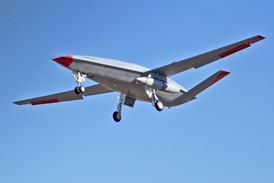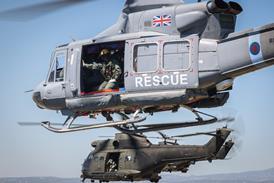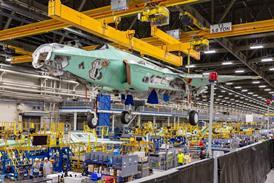Pilots - and the industry - need to look again at the issue of decision-making when faced with landing in stormy conditions. That is the conclusion drawn by the Transportation Safety Board of Canada (TSB) in its report on the Air France Airbus A340-300 runway overrun at Toronto airport in 2005.
The Board is right. It has not ventured an opinion based merely on this accident itself the report studies seven accidents or incidents involving other Air France aircraft landing in stormy weather, cites four more involving other airlines, quotes a NASA examination of pilot decision-making in these circumstances, and finally provides an analysis of incidents involving go-arounds reported to the International Air Transport Association's safety data exchange system STEADES.
The report observes: "Thorough investigations into accidents similar to this one, along with very well thought-out conclusions, findings and recommendations, have not made much of a dent in the number of such accidents, which continue to happen around the world." The TSB concludes: "We seem unable to develop adequate tools to mitigate this specific risk."
Tools include windshear prediction and warning systems at airports and in aircraft, massively improved real-time storm-cell tracking systems for air traffic controllers - in other words, systems that can provide the aircrew and controllers with high-quality information, on the basis of which pilots can make clear judgements about whether to proceed with an approach or not. But improved tools alone are not the whole story, and while their development and adoption is awaited, pilot training in decision-making when landing in bad weather needs to be developed and implemented by airlines, says the TSB.
This is easier said than done. The report quotes NASA's study, Pilot decision-making - assessment of risk and weather, which comes to the conclusion that four factors contribute to decision errors: "Ambiguity of information dynamically changing risks goal conflicts (organisational or social pressures) and unanticipated consequences."
At Toronto airport there is no ground-based windshear alert system and the controllers have rudimentary information about the location of convective weather cells on their displays but the A340 had a windshear prediction and alert system and a good weather radar.
NASA's point about "ambiguity of information" is highly applicable in this case: the crew knew from weather reports that storm activity existed close to the airport, they could see it on their radar, they could see the runway was very wet, yet the veering of the wind on short final approach from a crosswind with a headwind component to one with a tailwind component did not trigger a windshear alert from their onboard systems at any time. Meanwhile the crew would have noted that aircraft were landing successfully just ahead of them and were sequenced behind them to carry out approaches.
There is also an embedded conflict in the minds of all pilots: unless they are very new, they have landed successfully many times in bad weather, so the problem on each new approach is to determine whether the bad weather today is any worse than that in which they have successfully landed before.
NASA's point about "dynamically changing risks" is highly significant here. The report categorises this approach as one in which the crew faced continual dynamic changes, which implies high mental workload and, for the pilot flying (PF), demands that reach saturation level. When this aircraft ran into torrential rain which deprived the pilots of visibility just as it was touching down, the PF had his hands full just keeping the aircraft on the runway, let alone worrying about stopping. Hence the delay in selecting reverse thrust.
On the other hand, if severe convective weather is in the vicinity, the existence of "dynamically changing risks" is more or less a given state of affairs, and pilots know that. So why do they persist with an approach in such conditions? Part of the reason is that, if the situation is known to be changing, the crew's mentality is to proceed on a discovery basis: 'If the weather is okay we land if it isn't we throw it away'. But carrying out a go-around that passes through a storm cell carries risks too.
The only way to deal with all this is to replace the ambiguity with high-quality real-time data on the basis of which high-quality decisions can be made.
Despite the damage and fire, no lives were lost NASA's point about "ambiguity of information" is highly applicable in this case.
Source: Flight International
















